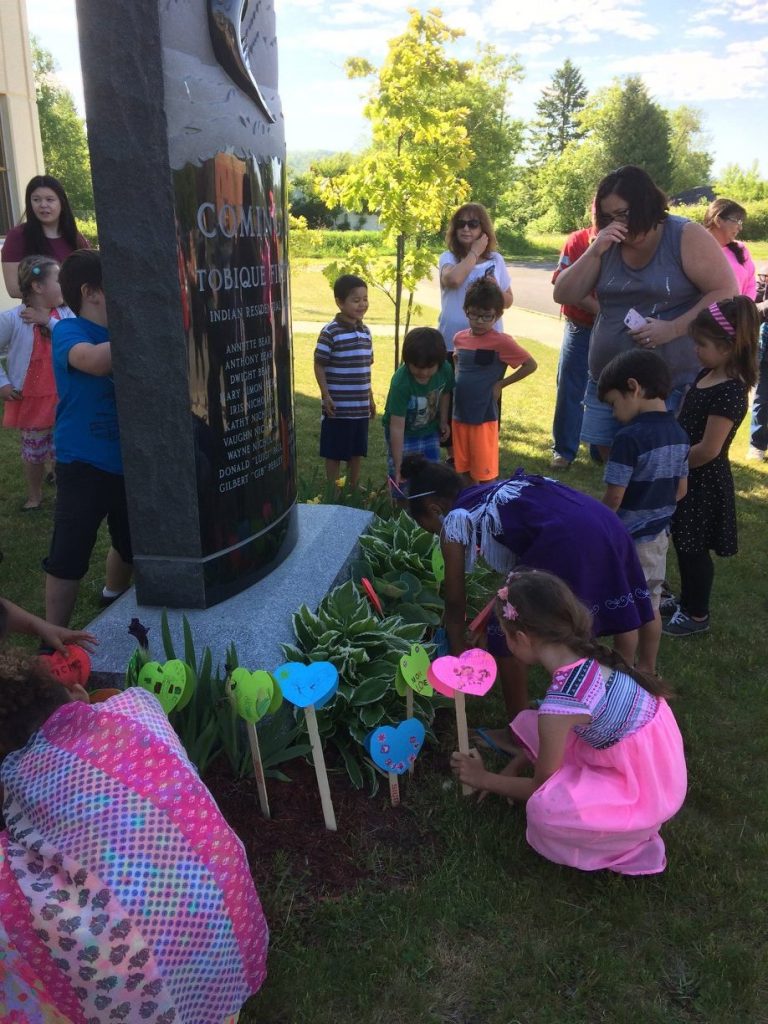This blog post was provided by Robin McLeod, Child and Youth Engagement Assistant at the First Nations Child and Family Caring Society of Canada.
Each year on June 21st, National Aboriginal Day is a day to recognize and celebrate the historical and contemporary contributions of First Nations, Métis and Inuit peoples to their communities, to Canada and to the world. It is also an opportunity to provide a voice and a platform for Indigenous Peoples and to acknowledge the legacy of colonization.
The First Nations Child and Family Caring Society – otherwise known as the Caring Society –works to ensure the safety and well-being of First Nations youth and their families through education initiatives, public policy campaigns and providing quality resources to support communities. Using a reconciliation framework that addresses contemporary hardships for Aboriginal families in ways that uplift all Canadians, the Caring Society champions culturally based equity for First Nations children and their families so that they can grow up safely at home, get a good education and be healthy and proud of who they are. We provide opportunities for children and youth of all backgrounds to collaborate, think creatively about the future, and inspire one another to lead social change through projects such as Honouring Memories, Planting Dreams.
Honouring Memories, Planting Dreams
Honouring Memories, Planting Dreams (HMPD) is a reconciliation event celebrated annually in the spring which invites people of all ages and backgrounds to plant Heart Gardens in memory of the children lost to the residential school system and to honour the survivors and the legacy of the Truth and Reconciliation Commission (TRC). The inaugural HMPD event took place on June 3, 2015 at Rideau Hall as part of the closing ceremonies of the TRC and over 400 children participated in the creation of this special Heart Garden. In the same year, more than 6,000 hearts in over 80 Heart Gardens were planted across Canada, and Canadians across the country are encouraged to plant their own garden.
Heart Gardens can be made by anyone, no matter who they are. What’s important is to be creative and to speak from the heart. Gardens can be temporary and include decorated paper hearts, or they can be more permanent and include flowers and, where appropriate, Indigenous plants and medicines. If you plan on planting sacred medicines, be sure to ask an Elder on how to care for the plants so that they can grow up to be healthy and proud. Once your garden is planted, participants are encouraged to register their gardens online so Canadians can locate a garden in their communities. You can search for gardens on the First Nations Child and Family Caring Society of Canada website. Nearly 4,000 hearts have been planted in 2017 and we hope you will add to our growing list.

Other Ways You Can Help
In addition to HMPD, the Caring Society has several other campaigns and events anyone can participate in, including I am a Witness, Shannen’s Dream and Jordan’s Principle.
I am a Witness
In 2016, the Canadian Human Rights Tribunal found that the Government of Canada is racially discriminating against 163,000 First Nations children and their families by providing flawed and inequitable child welfare services. The I am a Witness campaign invites you to follow and learn about the First Nations child welfare case in person or online and take small, yet meaningful actions, to help. There are resources readily accessible to anyone, no matter their age or experience at fnwitness.ca.
Jordan’s Principle
Jordan’s Principle is a child-first principle named in memory of Jordan River Anderson, a First Nations child from Norway House Cree Nation, Manitoba, who was born with complex medical issues. Jordan spent more than two years unnecessarily in the hospital while the province and the federal government argued over who should pay for his home care. Jordan passed away at the age of five, never spending a day in his own family home. Jordan’s Principle aims to make sure First Nations children can access public services ordinarily available to all other Canadian children without experiencing any service denials, delays or disruptions simply because they are First Nations. Learn more at jordansprinciple.ca.
Shannen’s Dream
Shannen Koostachin, a youth education advocate from of the Attawapiskat First Nation in Ontario, had a dream: safe and comfy schools and culturally based education for First Nations children and youth. Many First Nations schools receive less funding per student than provincial and territorial schools, no funding for necessary resources such as libraries or computers, and do not provide a safe and appropriate learning environments. Shannen fought tirelessly for a proper school in her community, but tragically she passed away in a car accident at the age of 15 before she was able to see her dream come true. However, on June 22, 2012 – the day she would have graduated – a new school was built in Attawapiskat. In June, 2017 the school was officially named “Shannen’s Dream Kattawapiskak Elementary School” in her honour. Learn more at shannensdream.ca
For more information on what you can do to help, please visit the First Nations Child and Family Caring Society of Canada website, or to make a donation, please visit the First Nations Child and Family Caring Society of Canada’s Charity Profile Page.
Leave a Reply